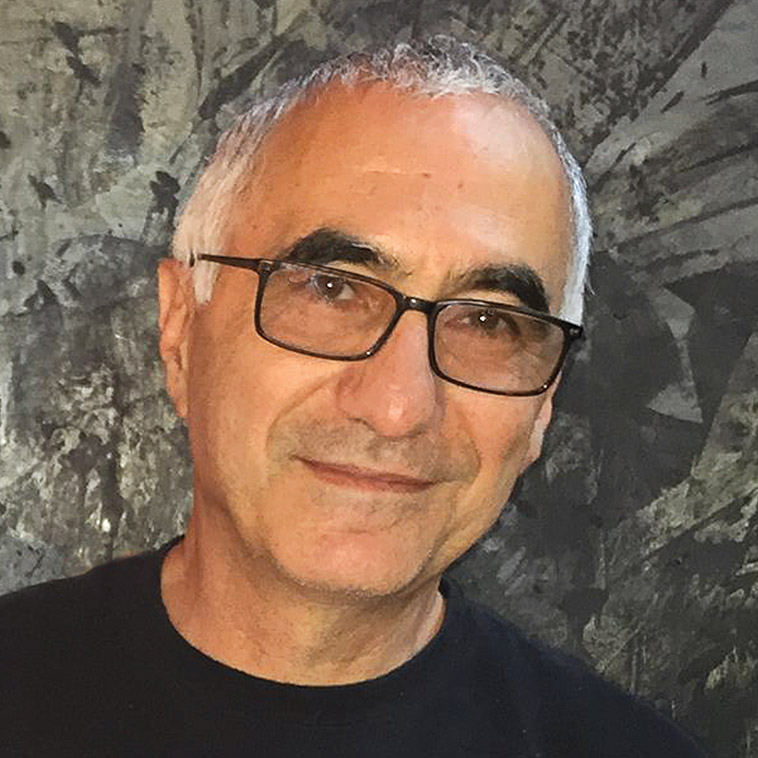
Photo: ASP Archive
Natalie Agazarian
Editor
“My camera is one of my best friends; I always take an extra day or two wherever I travel to document what I see. Every place I went to in Armenia I documented and put them in my computer hoping I would get to do something special with them one day,” said David Karamian.
On Friday, March 7, former engineer, photography enthusiast, and “creative visionary” David Karamian presented his book, Armenia – The Lone Stone: A Traveler’s Guide to Tradition and Modernity, as part of the Spring Lecture Series of the Armenian Studies Program. Designed as a comprehensive resource for both Armenians and non-Armenians, the book prepares readers for their journeys abroad by offering historical context, cultural in-sights, and practical advice for experiencing Armenia’s unique blend of ancient tradition and modern life.
Growing up in a region with few Armenians, Karamian embraced opportunities to speak publicly about Armenia’s rich artistic heritage, breathtaking landscapes, and enduring traditions, often serving as one of the few voices sharing authentic Armenian stories in his community. Over time, these experiences deepened his sense of responsibility, not only to celebrate Armenian culture, but to provide others with genuine exposure to it. His work reflects a commitment to ensuring that Armenia’s identity is accurately conveyed to the world, bridging gaps of understanding and inspiring a deeper appreciation among both travelers and diasporans.
“We need to reach out to non-Armenians, especially at this point in our history. Let them know about our history, our culture… all our contributions to the world,” said Karamian. “We are not doing that well. All people know about Armenians is the Genocide.”
The book is thoughtfully organized into four sections, making it an easy guide for travelers. Section 1 covers everything you need to know before arriving in Armenia, including what essentials to pack and how to prepare for a trip. Section 2 focuses on experiencing the best of Yerevan, offering recommendations on how to fully enjoy the capital’s culture, cuisine, entertainment, and historical sites. To navigate life outside the city center, Section 3 highlights road trips, hidden gems, and “real iconic places” that showcase Armenia’s rich natural beauty. Section 4 offers suggestions for leisure activities for families and children, providing ideas for family-friendly experiences. “It provides a lot of information about where you can go in the country and what is available there,” Karamian remarked on the contents of the book.
In addition to travel information, the book includes sections dedicated to key moments in Armenian history, highlighting the country’s 3,000-year-old heritage alongside its modern society. Karamian also provides practical information for travelers, covering topics such as currency, transportation options, how to seek medical assistance, and essential Armenian phrases – all the “basic fundamentals” needed to connect with the local community.
Karamian read several passages from his book, eloquently describing the quiet richness of local life in Armenia. “Yerevan is not just a place to see; it’s a place to experience,” he emphasized. He spoke about the vibrant energy of the city’s streets, alive with the sounds of traditional music and the melodies of the duduk.
Karamian highlighted the simple, memorable moments – from spontaneous conversations with taxi drivers to late nights spent listening to live jazz – capturing the full emotional experience of being immersed in Armenian culture. Karamian reminisced of his own travels, stating that “those experiences are the moments that you get to feel the essence of the people and remember for a lifetime.”
In his presentation, Karamian demonstrated his deep knowledge of Armenia’s landscape, art, and culture, as well as his passion for sharing it with a broader audience. Most importantly, he emphasized his commitment to making both ancient and modern Armenia relevant and accessible to non-Armenians. “The book is not just a travel guide,” he explained. “It’s about the genius of the people. Why not celebrate what we’ve contributed to the world?”
 Hye Sharzhoom Armenian Action
Hye Sharzhoom Armenian Action